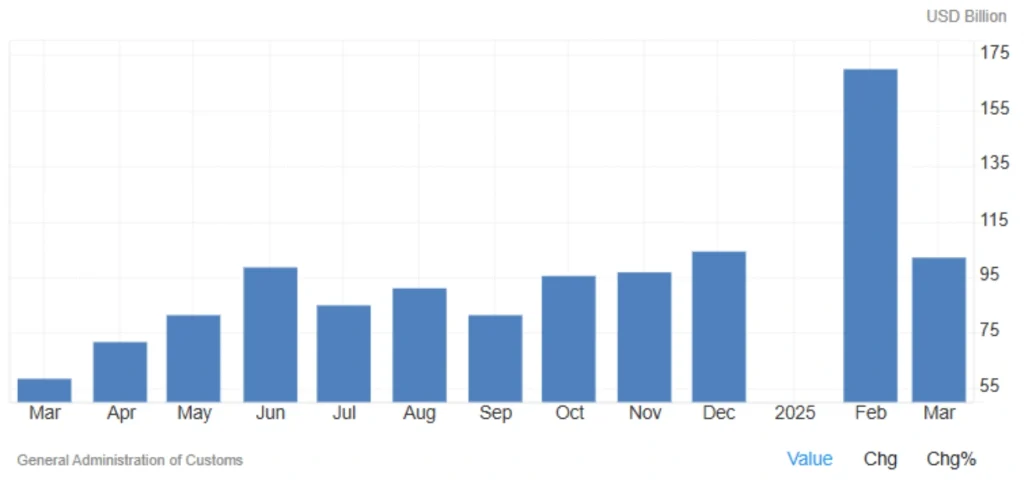
China’s Trade Surplus Soars in March 2025
China has once again stunned global markets with a powerful display of its export capabilities. In March 2025, the nation’s trade surplus skyrocketed to $102.64 billion, far surpassing market expectations and raising important questions about the state of global trade and China’s internal economic balance.
Let’s break down what’s behind this surge, why it matters, and what could come next.
A Record-Breaking Trade Surplus
China’s March trade surplus didn’t just beat projections — it shattered them. Market analysts had predicted a figure around $77 billion, but the actual surplus came in at over $102 billion. This is a dramatic rise from the $58.65 billion surplus recorded in March 2024.
What Drove This Surge?
The key factor? A 12.4% year-over-year increase in exports — the fastest growth since October 2024. This boom was largely driven by a rush among Chinese factories to ship goods before the anticipated implementation of new U.S. tariffs under Donald Trump’s trade policies.
Export growth: +12.4% YoY (vs. 4.4% forecast)
Main trigger: Urgent shipments to beat U.S. tariff deadlines
Imports on the Decline
While exports surged, imports fell by 4.3%, continuing a downward trend after an 8.4% drop during January–February. This suggests weakening domestic demand within China — a sign that not all is well beneath the surface.
Import decline: -4.3% (vs. -2% forecast)

What it signals: Lower consumer and business demand inside China
China’s trade surplus with the U.S. remains a sensitive issue. In March alone, the bilateral surplus stood at $27.58 billion, with the Q1 total reaching $76.65 billion.
Exports to U.S.: +4.5%
Imports from U.S.: -1.4%
Such figures are likely to draw increased scrutiny from Washington, especially under the renewed protectionist stance of the Trump administration.
First Quarter 2025: Surplus Hits $273 Billion
Zooming out, China’s total trade surplus in the first quarter of 2025 reached an impressive $273 billion, driven by:
Export growth: +5.8%
Import decline: -7%
These numbers reinforce China’s dominant position in global trade — but also reflect the nation’s increasing dependence on exports amid domestic demand concerns.
What Is a Trade Surplus — and Why Does It Matter?
A trade surplus occurs when a country exports more than it imports. For China, a large surplus can signal strong manufacturing and international competitiveness. However, it also carries implications for currency stability, foreign relations, and economic resilience.
Read More: Inflation: From China to the U.S.!
The Bigger Picture: Impacts and Implications
Positive: Chinese factories remain highly productive and globally competitive
Strategic advantage: A high surplus can help stabilize the yuan and support industrial policies
Risk: Weak imports reveal fragile domestic consumption and investment
Geopolitical Fallout: Trade Wars on the Horizon?
With tensions already rising between China and the U.S., this surplus may fuel further tariff escalations or punitive trade actions. The Trump administration could use the figures as justification for a harder stance.
Conclusion: A Powerful But Fragile Win
China’s $102 billion trade surplus in March 2025 is a striking achievement that showcases its global trade strength. But beneath the surface lies a more complex story — one of external pressures, internal economic risks, and uncertain geopolitical consequences.
As the year unfolds, all eyes will be on how Washington reacts and whether China can maintain this momentum while addressing its domestic economic challenges.
Share
Hot topics

Best Forex Trading Hours for Iranian Traders
The Forex market operates 24-hours a day, but clearly not every hour, equal it could even be every trading session, is profitable. There are times when the market sleeps, is...
Read more




Submit comment
Your email address will not be published. Required fields are marked *